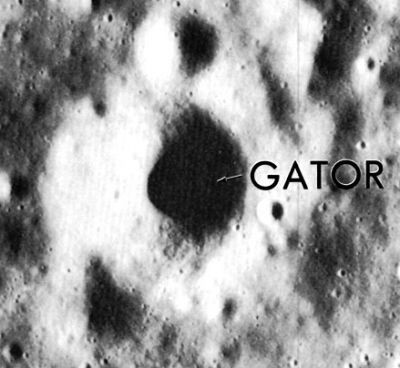Gator
Contents
[hide]Gator (Apollo 16 site craterlet name)
|
Lat: 9.0°S, Long: 15.6°E, Diam: 1 km, Depth: km, Rükl: 45 |
Apollo 16 Site Traverses Chart
Images
LPOD Photo Gallery Lunar Orbiter Images Apollo Images
Maps
(LAC zone 78D2) LAC map Geologic map LM map LTO map Topophotomap
Description
The Landing Site Name "Gator" is plotted on Site Traverses chart 78D2/S2 .
Description: Wikipedia
No Wikipedia page for Gator, see page of its west-northwestern neighbor: Palmetto
Additional Information
- It is perhaps possible to observe Gator through very powerful telescopes, or to make digital webcam photographs of it (also through powerful telescopes). Gator has the same diameter as its neighbour North Ray Crater to the north-northwest, and should be observed during the hours when there's enough shadow on its inner slopes (as seen in the orbital photograph above). The albedo of Gator is rather low, and because of this it is not observable during Full Moon. Both North Ray Crater and South Ray Crater on the other hand are very easy observer's targets just before, during, and after Full Moon! - DannyCaes Apr 25, 2010
Nomenclature
Astronaut-named feature, Apollo 16 site.
The small bowl-shaped crater immediately east of Gator was unofficially called Lone Star (see page 222 in David M. Harland's Exploring the Moon; the Apollo expeditions)(Springer, 1999).
LPOD Articles
Bibliography
David M. Harland: EXPLORING THE MOON, the Apollo expeditions.
Eric M. Jones: APOLLO LUNAR SURFACE JOURNAL (ALSJ).
